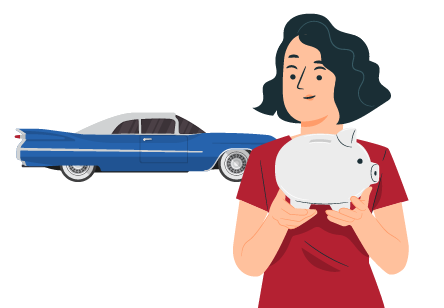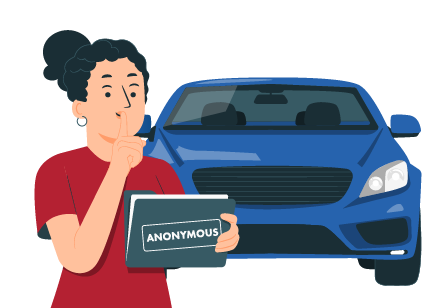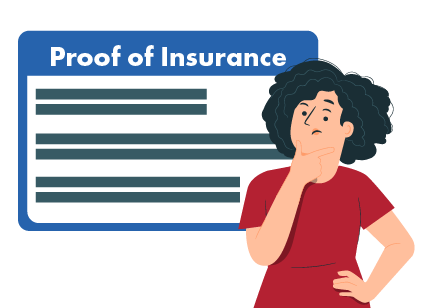What is Multi-car Insurance?
Multi-car insurance, or multi-vehicle policy, covers two or more vehicles under a single policy. Insurers use the terms “multi-car” and “multi-vehicle” interchangeably, although insurance coverage differs by insurer. Generally, this type of insurance policy allows you to insure multiple cars together, whether in the same household or owned by individuals who live in the same residence.
A big advantage of multi-car insurance is the substantial savings. Most insurance companies give a multi-car discount if you insure more than one vehicle under a single policy. Even if cars are insured under separate policies but with the same insurer, they may still give discounts for loyalty.
How Does Multi-Car Insurance Work?
Multi-car insurance allows you to insure more than one vehicle on one insurance policy and reap the benefits of multi-car discounts. Coverage is the same as a standard car insurance policy. Still, insurers reduce your rates when insuring more than one car.
You need to contact your insurer to add a second car, which is good for new car purchases or combining policies after moving in together. Insuring all your vehicles with one insurer usually also gives you lower insurance prices.
Eligibility criteria vary, some insurers require all cars to be registered at the same address. In contrast, others consider the policyholder’s relationship with the car owner. In some cases, multi-driver policies may also apply.
Billing is streamlined with all insurance premiums on one statement, but coverage may vary per car. You should compare insurers’ discounts, requirements, and coverage options for the most savings.
How Do I Get a Multi-Car Insurance Discount?
A Multi-car or Multi-vehicle discount can save you money when you insure multiple cars under the same insurance policy. Multi-vehicle discount percentages vary by insurer, from 12% to 46%, but to find out the exact discount for your plan, get multiple car insurance quotes from several companies.
You must insure two or more cars from the same address or household to qualify. This applies whether you are the primary driver of multiple vehicles or multiple drivers, spouses, partners, family members, share coverage across different cars. However, each insurer has rules for multi-vehicle discounts, so check with your insurer for specific requirements.
Not all insurers offer multi-car discounts, so comparing policies across insurance providers will ensure you get the most savings. Before you buy, review different insurers’ offers to compare quotes and find the best combination of coverage and an affordable price.
When getting multi-car insurance quotes, you need specific details to speed up the process and get an accurate quote. Gathering and storing the key information digitally in advance will save time and effort.
Vehicle and Coverage Details:
- Vehicle Identification numbers (VIN) for each car on the policy
- Make and model of each vehicle (may be required in addition to the VIN)
- Approximate weekly or annual mileage for each car
- Preferred coverage types and coverage limits
Driver Information:
- Primary driver of each vehicle (who drives which car most)
- Driver’s license numbers for all people on the policy
- Social Security numbers for each driver (if required for verification)
- Dates of birth for all drivers
To speed up the process, digitally store longer identification numbers like VINs and driver’s license numbers and copy them into the online forms to minimize errors and save time. Having this information ready lets you get a quote faster and ensures that all policy details match your coverage needs.
What are the Benefits of a Multi-Car Policy?
A multi-car insurance policy means savings and convenience, one policy renewal date, one payment, and one deductible.
- Discounted Auto Premiums - Most insurers offer multi-car insurance discounts on your insurance premiums up to 25%
- Single Deductible for Multi-Car Damage - Some insurers waive extra deductibles if multiple cars are damaged in the same event, like a storm.
- Stacked Coverage Options - In states that allow it, uninsured/underinsured motorist (UM/UIM) coverage can be combined across multiple vehicles.
- Simplified Management - One policy renewal date and one bill for your policy means less hassle for you.
- Easier Policy Changes - Getting proof of insurance, adding a driver, or changing policy details is simpler when all cars are with the same company.
All these benefits make the multi-vehicle policy a smart choice for households with more than one car.
Is There a Limit to How Many Vehicles and Drivers I Can Have on a Multi-Car Insurance Policy?
The number of vehicles and drivers allowed on a multi-car insurance policy varies by insurer.
- Vehicle Limits - Most insurers allow up to 4 vehicles per insurance policy; some may allow more. If you go over the limit, you’ll need a second policy. To insure a car, you need an insurable interest. That means you have a financial stake in the vehicle, ownership, or co-ownership. Some insurers allow adding vehicles owned by household family members, but rules vary.
- Driver Limits - The number of drivers you can add is unlimited as long as they live in the same household. Household family members living at the same address are usually eligible; unrelated individuals, such as roommates, may also be eligible, depending on the insurer’s policies. Occasional drivers outside the household don’t need to be listed.
Check with your insurance agent for exact requirements, as vehicle and driver policies vary.
What are the Requirements to be Eligible for Multi-Vehicle Discounts?
The main requirement for a multi-car discount is that all insured vehicles must be at the same address. However, providers have different rules:
- Some only offer discounts if related people own insured vehicles in the same household.
- Others will discount unrelated people as long as they live together.
- Some will offer a discount even if each car has its own policy as long as the same company insures them.
Most providers limit the number of vehicles per policy, usually to 4 or 5. If you add a vehicle mid-term, you may get the auto insurance discount immediately; if you remove a vehicle, the discount will be removed. Check with your insurance provider for more information, as plans vary.
How Does Coverage Work on a Multi-Car Insurance Policy?
When you buy a multi-car insurance policy, you can customize your auto coverage type for each vehicle under the insurance policy terms and get potential discounts from the insurer. Most states require a minimum amount of car insurance, but having more coverage can give you more financial protection.
Some of the standard coverage options in multi-car insurance policies are listed below.
- Liability Coverage: Liability insurance covers damages and injuries you cause to others in an accident up to the policy limits. It includes bodily injury liability and property damage liability, which most states require to drive legally.
- Collision Coverage: Collision insurance coverage pays for repairs to your vehicle in case of an accident, regardless of fault. It also covers damage from single-vehicle accidents and collisions with stationary objects like trees or poles. If the vehicle is totaled, the insurer pays based on its actual cash value minus the collision deductible.
- Comprehensive Coverage: Comprehensive insurance covers vehicle damage from non-collision incidents like theft, vandalism, weather-related damage, and animal accidents.
- Uninsured/Underinsured Motorist Coverage (UM/UIM): Required in some states, uninsured motorist coverage protects you if you’re involved in an auto accident with an uninsured/underinsured driver. It also applies to hit-and-run incidents and pedestrian accidents.
- Personal Injury Protection (PIP): Mandatory in no-fault states, PIP covers medical expenses, lost wages, and several other related expenses for you and your passengers, regardless of fault.
- Medical Payments Coverage (MedPay): Similar to PIP, MedPay covers medical expenses for you and your passengers after an accident, regardless of fault, and is required in some states.
- Roadside Assistance: Roadside assistance is an optional coverage that pays for emergency services like towing, battery jump-starts, flat tire changes, and fuel delivery if you get stranded.
- Rental Reimbursement Coverage: If your insured vehicle is damaged in a covered event and needs repairs, this additional coverage pays for a rental car so you can continue your daily activities without interruption.
Can Vehicles on a Multi-Car Policy Have Different Coverage?
While multiple vehicles can be on the same policy, not all coverages must be the same. State-mandated coverages like liability and uninsured motorist coverage limits must be the same across all vehicles on the car insurance policy. However, policyholders can customize comprehensive and collision coverage per vehicle.
For example, you can have full coverage car insurance (comprehensive and collision) on a new vehicle and liability only or minimum coverage insurance on an older car. You can also add coverages like rental car reimbursement or custom equipment protection to specific vehicles, but not all of them.
Remember, insurance follows the car, not the driver. This means the insurance coverage you select for a specific vehicle will only apply to that vehicle in the event of a claim. Suppose a car with liability-only coverage gets damaged in an accident. In that case, it won’t be covered under another vehicle’s full coverage policy.
By understanding these car insurance coverage differences, drivers can customize their policies to balance protection and affordability for each vehicle in their household.
When is a Multi-Car Policy Not the Best Option?
A multi-car policy can be convenient and save you money, but it’s not always the right choice for everyone. Here are some situations where insuring multiple vehicles on one car insurance policy may not be possible or practical:
- Specialty Vehicles Need Separate Policies: If you have a motorcycle or a classic car, a standard multi-car policy won’t work. Motorcycles require separate motorcycle insurance, even if your provider offers both types of coverage. Classic cars, which often require special storage conditions and agreed-upon value policies, are best insured through a provider specializing in classic vehicle insurance. These single-car policies usually have higher limits and special provisions unavailable in standard auto insurance policies.
- Residency in Multiple States: If you split your residency between two states and store vehicles at different locations, you may need separate car insurance policies for each state. Auto insurance companies require all vehicles on a multi-car policy to be registered at the same address.
- High-Risk Drivers in the Household: When insuring multiple vehicles on one policy, the insurance company looks at the driving history of all listed drivers. If someone in your household has a poor driving record, their driving history will increase your overall car insurance rates. Keeping their policy separate may help control insurance costs.
- Adult Children Moving Out: If your teen driver is away at college, they can usually stay on your insurance policy as long as their primary address is still your home. But once they graduate and move into their own place, they’ll usually need to get their own auto insurance policy.
Now that you know the exceptions, you can make an informed decision about whether a multi-car policy is right for your household or if separate policies would be better.
Multi-Car Insurance Simplified with Insurance Navy
Life is full of challenges, but car insurance shouldn’t be one of them. Suppose you have multiple vehicles and are looking for a provider that offers flexible insurance coverage options, great service, and low insurance rates for drivers of all ages. In that case, Insurance Navy is here to help.
With decades of experience covering drivers across the country, we offer affordable and comprehensive multi-car insurance solutions.
Insuring your vehicles with Insurance Navy means you’ll have the right coverage and additional savings. Get started with a free online car insurance quote and switch to easy and cost-effective multi-car policies. Have questions about coverage for a second vehicle? Our knowledgeable reps are here to help.
Frequently Asked Questions
Are multi-car and multi-policy the same thing?
No, multi-car and multi-policy are two different things. Multi-car insurance is when multiple cars are insured on one car insurance policy, and you get a discount for each additional vehicle. Multi-policy insurance is when you bundle different insurance products (auto, homeowners, or renters insurance) with one provider and get discounts across all the policies. While both can save you money, a multi-car policy is specifically for multiple vehicles on one auto policy, and a multi-policy is for multiple types of coverage (home, boat, or life insurance)
How Many Cars Can Be On One Auto Insurance Policy?
Most insurance companies allow up to 5 cars on one multi-car policy, but this number can vary by company. Some companies may allow fewer or more, so always check with your insurance company for their policy limits.
Can I Have Multiple Car Insurance Policies?
Yes, you can have separate policies for each car you own. Individual policies may sometimes be required, especially if a vehicle doesn’t qualify for a multi-car policy. For example, a motorcycle and a car can’t be on the same policy and would require separate policies. If you want different liability limits for your vehicles, getting separate policies might be the best option, as liability limits have to be the same across a multi-car policy.
Is It Cheaper to Insure Multiple Cars on One Auto Policy?
In most cases, yes. Many companies offer a multi-car or multi-vehicle discount, which can save you a lot of money on your car insurance rates. For example, if the average rate for liability-only coverage is $160 a month per car, insuring two cars on separate policies would be $320 a month. But with a 25% multi-car discount, rates would be $240 a month, so you would save $960 a year.
What Are Stacked Insurance Limits?
Stacked insurance limits allow adding uninsured/underinsured motorist (UM/UIM) coverage from multiple policies or vehicles. For example, if two cars on your policy have $20,000 in UM/UIM coverage, stacking would increase the total coverage to $40,000. However, not all states and companies allow stacking, so check with your state or insurance company.
Can I Add a Non-Family Member to My Car Insurance Policy?
It depends on the insurance company’s eligibility criteria. Some companies require anyone added to the policy to be related by blood, marriage, or adoption. However, many companies allow non-family members such as roommates or domestic partners to be added if they live in the same residence. If you need to add someone outside your household, check with your auto insurance company to see their requirements.





